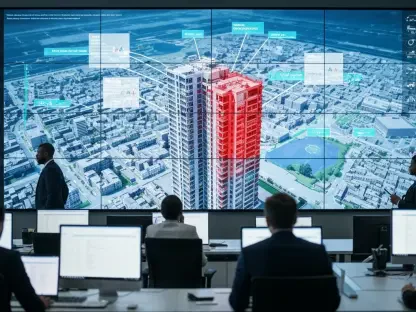Data analytics is profoundly transforming the management of car accident cases in New York City, providing unprecedented insights that enhance both urban road safety and legal proceedings. By utilizing comprehensive traffic accident data, key stakeholders such as legal professionals and city planners can identify patterns and trends, leading to better safety measures and more effective legal outcomes. This advancement marks a significant shift from traditional methods, offering a more data-driven approach that aligns with the complexities of urban traffic and legal scenarios. As a result, both sectors are now witnessing substantial improvements in efficiency and accuracy, benefiting the wider community in numerous ways.
Leveraging Data Analytics for Urban Safety
Data analytics assists city planners by highlighting high-risk locations and times, allowing for predictive interventions that lower the frequency and severity of accidents. It enables planners to pinpoint intersections with high pedestrian activity and frequent traffic jams, prioritizing these areas for safety improvements. This proactive approach opens the door to informed policies tailored to the city’s unique traffic challenges, ultimately improving overall road safety.
By analyzing traffic data, city planners can implement targeted infrastructural changes such as adjusted traffic signal timings and updated road signs. These changes are based on empirical evidence, ensuring that resources are allocated efficiently to areas that need them the most. This data-driven strategy not only enhances road safety but also optimizes traffic flow, reducing congestion and improving the overall urban experience for residents and visitors alike. Additionally, the continuous feed of updated traffic data allows for real-time adjustments to traffic management policies, making the city more adaptive and resilient to emerging traffic patterns.
Transformative Impact on Legal Proceedings
For the legal domain, data analytics offers a treasure trove of precise insights into vehicle collisions. Advanced analytics can determine liability by piecing together various data points such as vehicle speed, location, and traffic signal status. This data-driven approach enables more accurate reconstructions of collision events, fostering fairer outcomes in legal cases. By correlating these data points, legal professionals can craft powerful, evidence-backed narratives, streamlining the legal process and facilitating fair compensation.
Legal professionals benefit substantially from the detailed reports outlining collision circumstances provided by data analytics. These reports contribute significantly to efficient legal proceedings and fair compensation outcomes. By offering clear and quantitative evidence, analytics streamline the often-lengthy process of legal deliberations. The data-backed narratives enhance the credibility of legal arguments, supporting claims with empirical insights and thus creating a more powerful advocacy for clients. This process ensures that each case is presented with a level of objectivity and precision that was previously unattainable, bolstering the integrity of the judicial process.
Predictive Analytics and Pattern Recognition
Predictive analytics plays a pivotal role by using historical data to forecast future outcomes. This capability assists lawyers in evaluating car accident trends and predicting potential challenges in similar cases. It allows for meticulous decision-making during settlement negotiations and courtroom strategies. Pattern recognition further augments this by identifying recurring themes within large datasets. For example, if accidents of a specific type frequently occur at a particular location, pattern recognition can bring this to light, providing critical insights for case formulation and urban planning.
Pattern recognition also aids city planners by identifying high-risk areas that require immediate attention. By understanding these patterns, planners can implement preventive measures such as improved signage, better lighting, and enhanced pedestrian crossings. This proactive approach not only reduces the likelihood of accidents but also fosters a safer urban environment for all road users. By integrating these insights into their planning processes, city officials can ensure that preventive strategies are both targeted and effective, leading to long-term improvements in urban road safety.
Integration of Big Data Tools
Big data tools revolutionize how information is processed and analyzed. These tools aggregate vast amounts of data from diverse sources such as traffic reports, weather conditions, and public records. By examining this collective data, legal professionals can uncover significant insights often missed when data points are isolated. Big data platforms accelerate the analysis process, enabling quicker identification of pertinent information for each case. Additionally, visualization tools present data in accessible formats, aiding clear and compelling storytelling for juries and judges. The integration of these technologies allows for fact-based, data-driven legal strategies, enhancing case outcomes.
City planners also benefit from big data tools by gaining a comprehensive view of traffic patterns and accident hotspots. This holistic perspective enables them to make informed decisions about where to allocate resources and implement safety measures. By leveraging big data, planners can create more effective and efficient traffic management strategies that address the unique challenges of New York City’s bustling streets. As both fields adopt these advanced tools, the synergy between urban planning and legal adjudication becomes increasingly apparent, fostering a more holistic approach to traffic management and accident resolution.
Enhancements in Traffic Management Through Data Analytics
City planners utilize data analytics to refine traffic control methods. The data highlights incident hotspots, leading to targeted infrastructural changes such as adjusted traffic signal timings and updated road signs. Predictive analytics also helps in forecasting potential collision sites and times, considering various factors like traffic volume and weather conditions. This foresight not only helps in reducing accident rates but also enhances emergency response efficiency. Optimizing routes for first responders ensures quicker arrival at accident scenes, potentially saving lives and minimizing injury severity.
By continuously monitoring and analyzing traffic data, city planners can adapt their strategies in real-time to address emerging issues. This dynamic approach ensures that traffic management remains effective and responsive to the ever-changing conditions of New York City’s roads. The integration of data analytics into traffic management practices ultimately leads to safer and more efficient urban mobility. Enhanced traffic management practices not only improve the daily commute but also significantly impact the economic and social well-being of the city’s inhabitants.
Unified Understanding Through Synthesized Information
Data analytics is significantly changing the way car accident cases are handled in New York City, offering groundbreaking insights that improve both urban road safety and legal processes. By analyzing extensive traffic accident data, essential stakeholders like legal experts and city planners are able to spot patterns and trends. This leads to enhanced safety measures and more efficient legal outcomes. This advancement represents a considerable shift from conventional practices, promoting a data-driven approach that addresses the complexities of urban traffic and legal scenarios. Consequently, both the safety and legal sectors are experiencing notable enhancements in accuracy and efficiency. This improvement not only benefits professionals in these fields but also has a positive impact on the broader community, contributing to a safer and more well-organized urban environment. These advancements underline the vital role of data analytics in modern urban management, showcasing its potential to bring about significant positive change in society.









